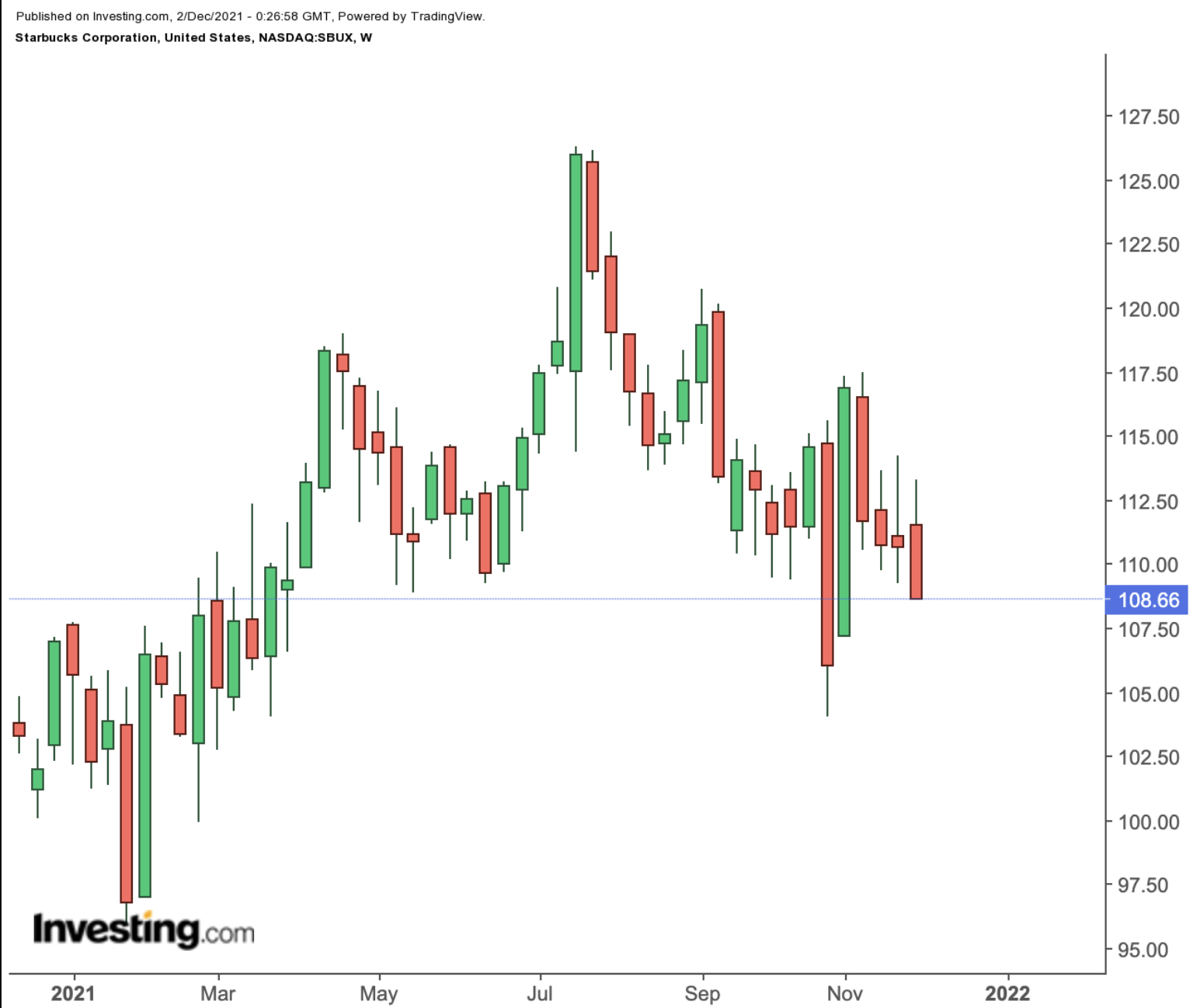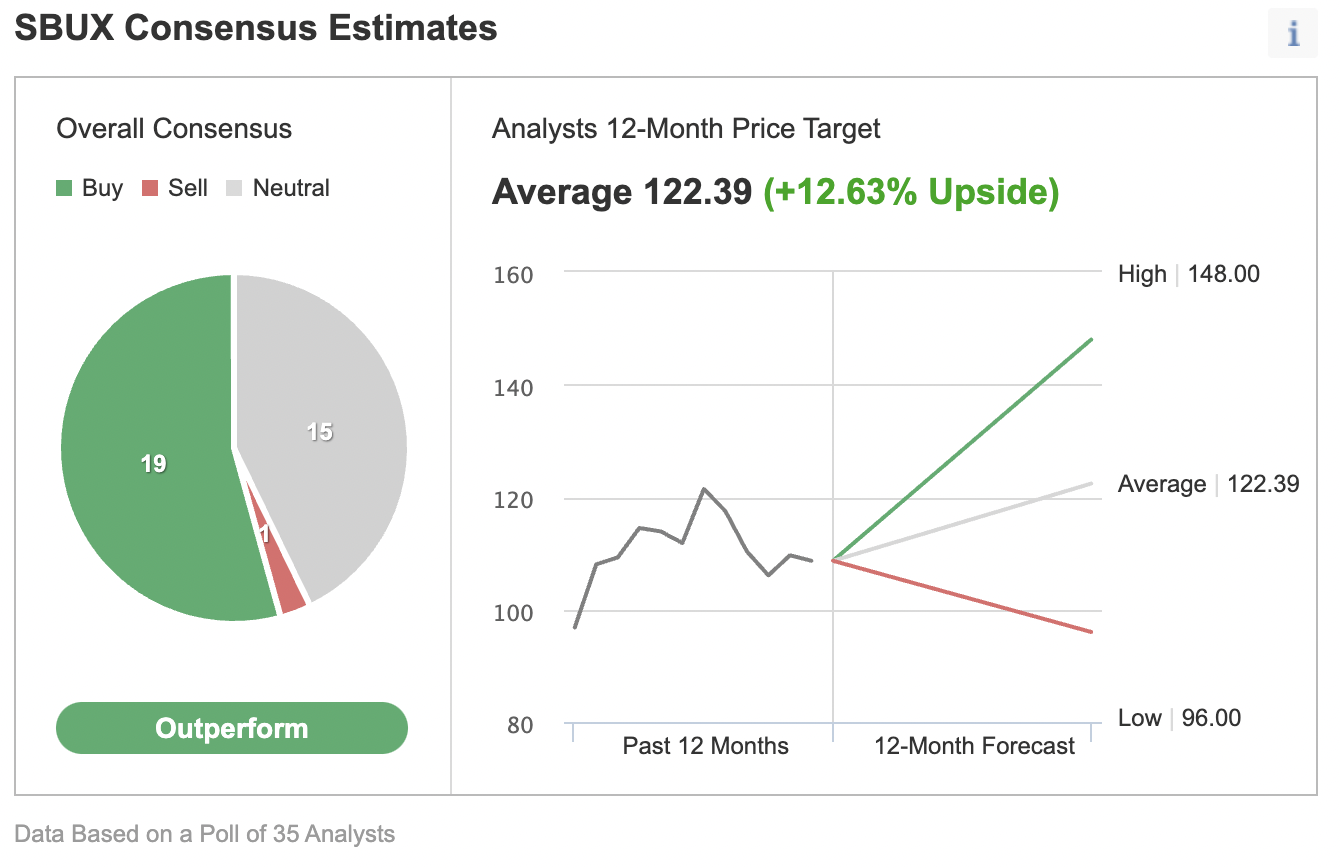Global coffee chain operator Starbucks (NASDAQ:SBUX) is under pressure after staging a powerful rebound this summer from the pandemic-induced weakness.
Its stock, after surging to a record high in mid-July, has fallen 13% since then, underperforming the S&P 500, and other large restaurant operators. While SBUX stock gained just 5% this year, McDonald’s (NYSE:MCD) rose more than 16% during the same period.

This weakness comes after a remarkable turnaround during the pandemic, when the Seattle-based company suffered a severe blow to its business as COVID-19 spread globally, forcing offices to close and daily customers to stay at home. Since the pandemic-triggered crash in March 2020, SBUX stock has more than doubled, closing yesterday at $108.66.
The current sluggish phase, however, indicates there's going to be a little rough sailing going forward as the coffee chain faces different challenges. The biggest one is the inflationary pressure that is forcing the company to hike its wages to remain competitive and attract workers amid widespread labor shortages.
Starbucks CEO Kevin Johnson told CNBC in a recent interview that the coffee chain plans to raise wages for baristas at least twice next year. By summer 2022, its pay floor will be $15 an hour, with an average hourly wage of $17 an hour, up from the current average of $14.
Said Johnson on CNBC:
“It’s better to do this investment now as customer mobility is increasing, and we believe it’s the right strategic bet to take.”
But investors didn’t like this move, especially when this spending is clearly hurting the bottom line. Starbucks said in its latest guidance that its operating margin will remain around 17% for the current fiscal year, below analysts’ expectations, hurt by escalating wage costs, packaging, and freight.
Divided Analyst Opinions
With the pandemic taking a new turn after the emergence of the Omicron variant, it’s not clear when these cost pressures will ease and how long it will take for office workers to return to their workplaces.
These concerns are behind the divided opinion among top analysts who cover SBUX stock. In an Investing.com poll of 35 analysts, 19 have a buy rating while 15 are neutral, with about 8% upside potential in their consensus price target.

Chart: Investing.com
Despite this cautious market stance, we believe Starbucks continues to remain an attractive fast-food stock to hold in a diversified portfolio. Its strategy, to keep prices low and gain market share in this tough operating environment, is the right one as it has the potential to pay off in the long run.
In addition, Johnson is spending aggressively to expand and re-make the company's stores so they're relevant in the post-COVID economy. The Seattle-based coffee purveyor is accelerating the rollout of its “pickup” store concept, with smaller-format locations that don’t have customer seating.
In the US, Starbucks is closing about 800 underperforming locations and building new store formats, like urban cafés without seating and more drive-thru lanes in the suburbs. Over the long run, the chain is planning to build more than 20,000 additional locations in the next decade to meet its goal of reaching 55,000 locations by fiscal 2030, up from nearly 33,000 today.
Another reason to own SBUX stock is the management focus to return more cash to shareholders in the form of dividends. Its payout has been rising about 18% per year during the past five years. The stock currently pays a $0.49 per share quarterly dividend, which translates into an annual yield of around 2%.
Bottom Line
Starbucks stock may not provide a short-term upside as current cost pressures hurt margins and the emergence of new variants slows global reopenings. But we continue to believe the stock is a good buy-the-dip trade due to management’s strong focus on increasing market share and returning more cash to stakeholders.
